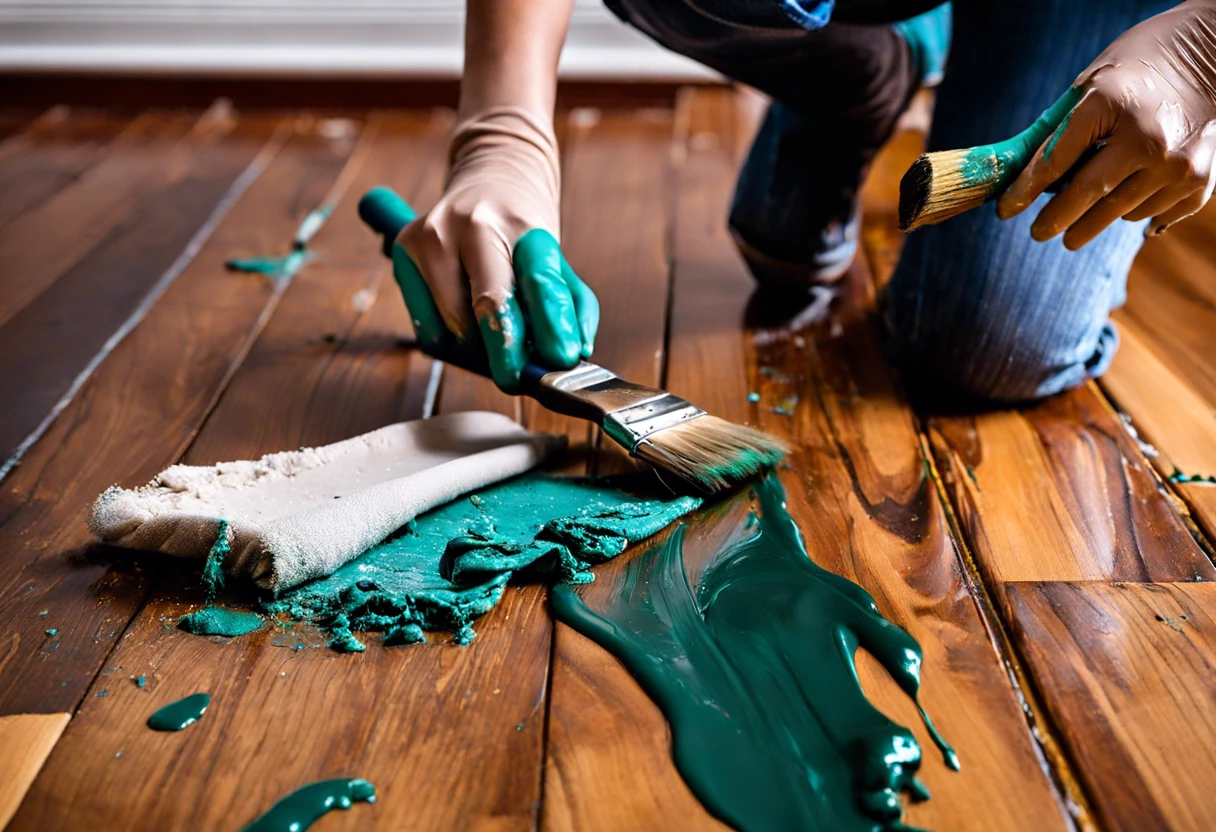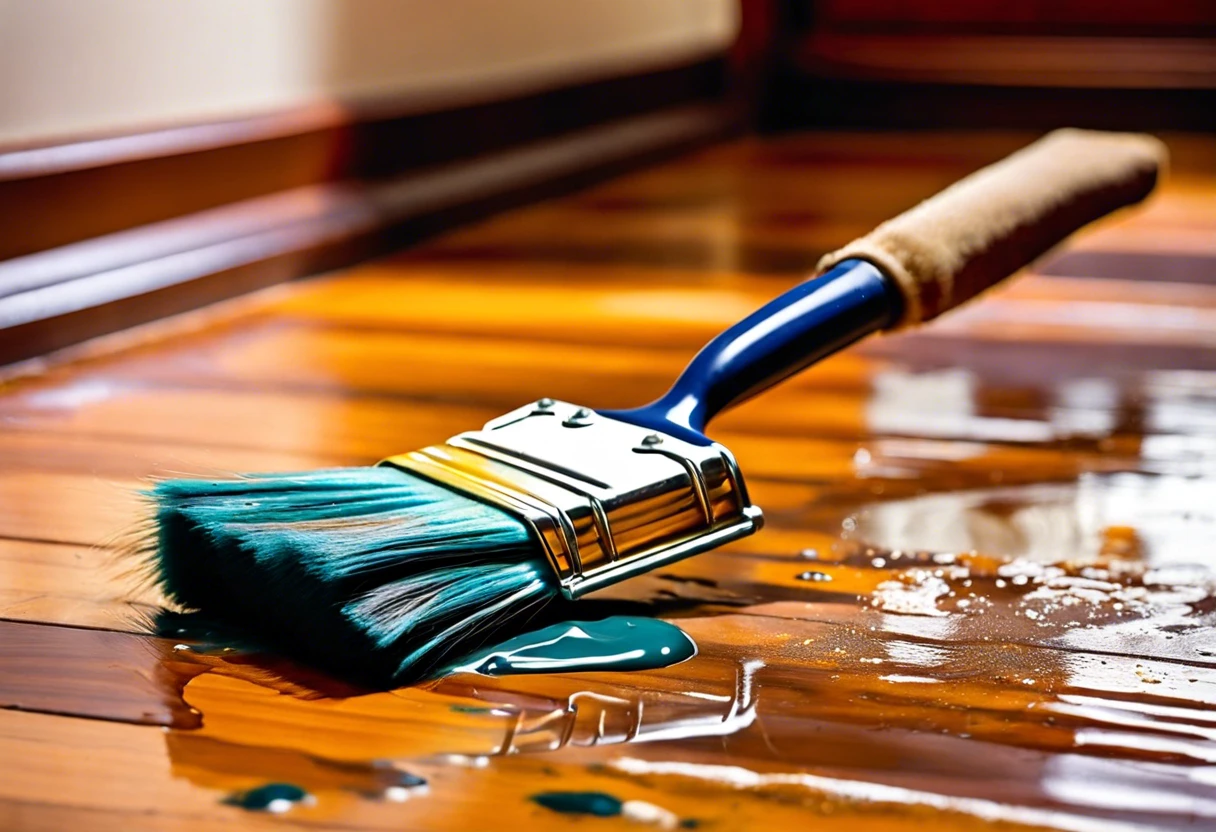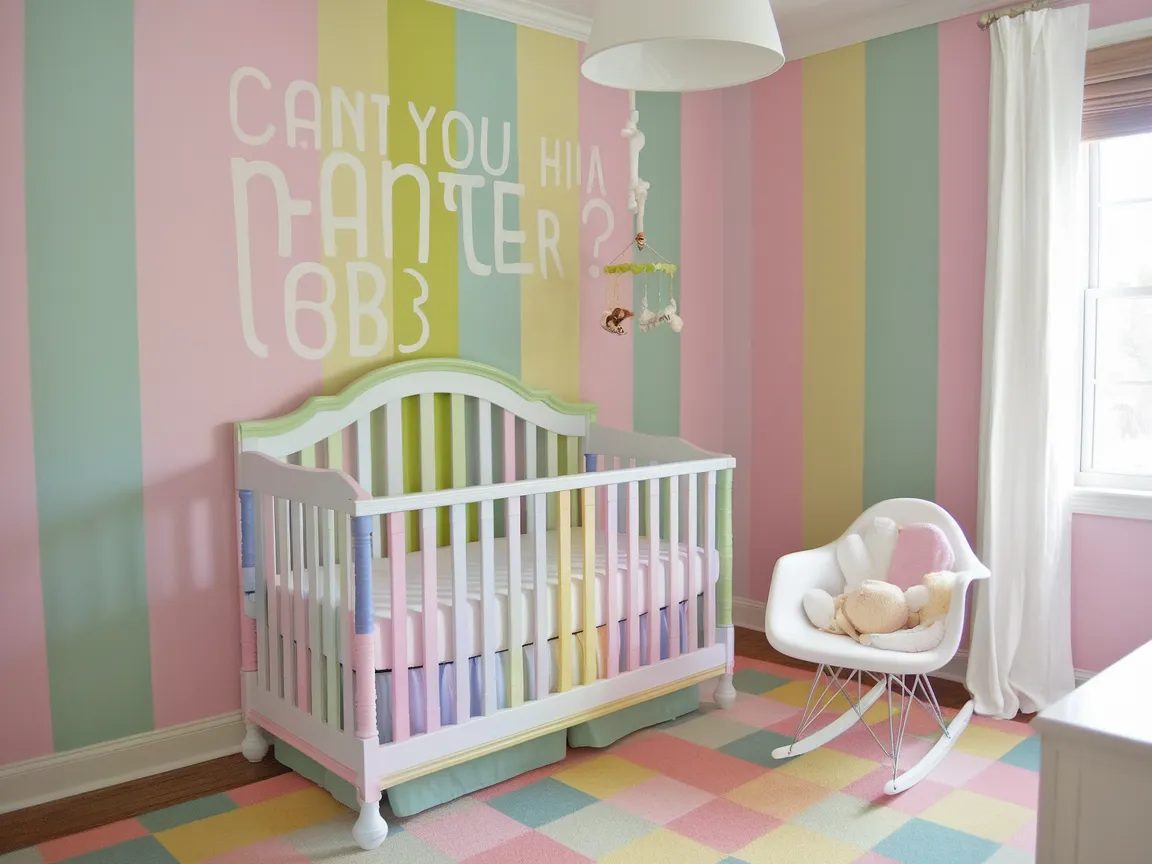How Do You Get Paint Off Hardwood Floors?
Published on: October 16, 2025 | Last Updated: October 19, 2025
Written By: Alisha Winters
Hardwood floors are wooden surfaces used in homes for a warm and stylish look. They’re like big wooden puzzles that make your floor all shiny and nice!
So, how do you get paint off hardwood floors? It’s super important because paint spills can ruin your pretty floors, and trust me, I’ve been there. One time, I dropped a whole can of bright blue paint on my beloved oak floors, and it took ages to clean up!
In this guide, we’ll cover essential preparations, a step-by-step paint removal process, types of paint affecting hardwood, factors influencing removal, common issues that pop up, and creative DIY ideas for enhancing your floors. Each section helps you understand how to get paint off hardwood floors so you can restore them to their former glory.
Contents
- 1 How Do You Get Paint Off Hardwood Floors?
- 2 What Are Hardwood Floors?
- 3 Essential Preparations Before You Start Removing Paint
- 4 Step-by-step Guide to Removing Paint From Hardwood Floors
- 5 Understanding Different Paint Removal Techniques
- 6 Alternative Natural Solutions for Paint Removal
- 7 Comparative Effectiveness of Paint Removal Methods
- 8 Time Saving Tips for Efficient Paint Removal
- 9 Types Of Paint That Can Affect Hardwood Floors
- 10 Factors Affecting Paint Removal From Hardwood Floors
- 11 Common Issues When Removing Paint From Hardwood Floors
- 12 Finishing Touches: Restoring Your Hardwood Floors After Paint Removal
- 13 Frequently Asked Questions (FAQs)
- 14 Conclusion: Achieving Beautiful Hardwood Floors After Paint Removal
- 15 Useful Resources
How Do You Get Paint Off Hardwood Floors?
To remove paint from hardwood floors, start with a putty knife to gently scrape it off. Next, use a cloth with rubbing alcohol or a paint remover. Always test on a small area first. Finish by cleaning the floor with soap and water.
What Are Hardwood Floors?
Hardwood floors are solid wood boards made from timber like oak, maple, or cherry. Typically, they’re about 18 to 28 mm (0.71 To 1.1 In) thick and 5 to 15 cm (2 to 6 in) wide. This design provides a durable and attractive flooring option.
The Finishing Touch
A freshly painted wall is a blank canvas. The best way to bring your room to life is with a single piece of statement art that ties everything together.
Browse Wall Art at Big Wall DecorIf you’ve ever wondered how to remove paint from hardwood floors, it can be a bit tedious! I once spilled paint on my newly refinished floors, and it was a nightmare!
I once relied on hardwood floors to create a warm ambiance in my home. While searching for methods to remove paint, I learned the hard way that protecting these beautiful surfaces is crucial.
Essential Preparations Before You Start Removing Paint
What do you need to prepare for?
- Paint Stripper: Use a high-quality paint stripper like Citristrip or Klean-Strip. It helps break down paint without damaging your hardwood.
- Protective Gear: Wear N95 respirators and chemical-resistant gloves like SHOWA 460. They protect you from harmful fumes and chemical burns.
- Scraper Tool: Use a detail scraper such as Hyde Tools 09937. This tool is essential for gently removing softened paint from the floor surface.
- Drop Cloths: Get heavy-duty drop cloths measuring about 9 ft x 12 ft (2.74 M X 3.66 M). They catch paint drips and keep your workspace clean.
We covered key preparations for paint removal. We will now cover a step-by-step guide for removing paint from hardwood floors.
Also See: How Much Paint Do You Need for a Dresser? Find Out!

Step-by-step Guide to Removing Paint From Hardwood Floors
This guide covers how to effectively remove paint from hardwood floors. Follow all steps for the best results.
-
Assess the Type Of Paint on Your Hardwood Floors
Determine whether the paint is water-based or oil-based. Water-based paints are easier to remove and typically need just soapy water, while oil-based paints require stronger solvents like mineral spirits.
Check the paint’s coverage area. A few drops may need a simple approach, while large spills require more intensive techniques.
-
Test a Small Area First
This step is crucial! Apply your chosen remover to a hidden patch of wood to ensure it doesn’t damage the floor or finish.
Wait a few minutes to see how the hardwood reacts. If it doesn’t lift the paint or harm the finish, you’re good to go!
-
Apply the Paint Remover
Drench a cloth or sponge in the appropriate paint remover based on the paint type. Spread it over the painted area but avoid excessive soaking—just enough to soften the paint.
Follow the manufacturer’s instructions for wait time; generally, it’s about 5 to 10 minutes or until paint bubbles form. Don’t rush; good things take time!
-
Scrape Off the Paint Carefully
Use a plastic scraper and gently scrape along the wood grain to lift the paint. Avoid metal scrapers, which can scratch the surface.
Work in small sections with slow, short strokes to minimize risk. If the paint resists, reapply the remover as needed; it may take a couple of tries.
-
Clean the Area Thoroughly
After scraping, remove residual paint remover, which can be harsh. Use a mixture of water (950 Ml or 4 Cups) and a few drops of mild dish soap on a fresh rag.
Wipe the area to eliminate any soapy residues and dry it with a cloth; ensure no chemicals remain on the hardwood. Now, breathe easy—you’ve done it!
That covers the process of removing paint from hardwood floors. Let’s now take a look at various paint removal methods.
Understanding Different Paint Removal Techniques
Many methods exist for stripping paint from hardwood floors. Some might surprise you!
The Finishing Touch
A freshly painted wall is a blank canvas. The best way to bring your room to life is with a single piece of statement art that ties everything together.
Browse Wall Art at Big Wall Decor-
Heat Gun Method
A heat gun can soften paint, making it easier to scrape off. Just keep the gun moving to avoid scorching your wood!
-
Chemical Strippers
These products break down paint but can be harsh. Always follow directions and test on a small spot first.
-
Sandpaper Technique
For stubborn spots, sandpaper works great. Use fine-grit (around 220) to smooth out after paint removal, but be careful to avoid deeper scratches.
-
Biological Solutions
Some DIYers swear by natural homemade solutions. For instance, mixing baking soda with water creates a paste that can lift paint, avoiding harsh chemicals!
We’ve wrapped up various paint removal methods here. Let us turn our attention to alternative natural solutions for paint removal.
Alternative Natural Solutions for Paint Removal
Sometimes, you want to avoid chemicals, right? Here are some natural options that can work wonders for removing paint!
-
Baking Soda and Water Paste
Mix equal parts of baking soda and water to create a paste. Apply it to the paint and let it sit for 30 minutes. Scrape it off gently with a plastic scraper.
-
Coconut Oil and Vinegar
This combo can soften paint. Mix 1 part coconut oil with 2 parts vinegar (for example, 100 mL of coconut oil with 200 mL of vinegar) and let it soak in for 10 minutes. Scrape it away gently.
-
Alcohol-Based Solutions
Rubbing alcohol can break down latex paint. Apply it to a cloth and rub the painted area. It works wonders for small spills!
We covered natural paint removal methods here. We will now cover the effectiveness of various paint removal techniques.

Comparative Effectiveness of Paint Removal Methods
Check out how these methods stack up against each other in terms of effectiveness and practicality.
| Method | Effectiveness | Ease of Use | Time Required |
|---|---|---|---|
| Baking Soda Paste | Moderate | Easy | 30 mins |
| Coconut Oil & Vinegar | High | Moderate | 10 mins |
| Rubbing Alcohol | High for small spots | Very Easy | 5 mins |
Time Saving Tips for Efficient Paint Removal
Want to speed up the paint removal process? Here are a few tricks!
| Tip | Benefits | Estimated Time Saved |
|---|---|---|
| Work in Sections | Avoid overwhelming yourself. Smaller areas allow better focus! | 30 mins |
| Use Fast-Acting Removers | Choosing efficient paint removers leads to quicker results! | Up to 1 hour |
| Let Solutions Sit | Allowing removers time to penetrate saves scraping effort! | 15 mins |
| Keep Floors Warm | Warmer wood helps paint lift easier. | 10-20 mins |
Types Of Paint That Can Affect Hardwood Floors
Let’s move on to paint types: latex, oil-based, acrylic, and spray paint.
-
Latex Paint
Latex paint is water-based and contains fewer volatile organic compounds (Vocs). To clean up, use warm soapy water before it dries; it’s often the easiest option for removing paint from hardwood floor painting techniques. If you’re curious about creating specific paint colors from scratch, you might want to explore how to mix black paint effectively.
-
Oil-based Paint
This type is more durable but can be harsh on hardwood. You’ll need solvents like turpentine or mineral spirits to remove dried paint spots that cling stubbornly to your floors.
-
Acrylic Paint
Acrylic is also water-based but contains different binding agents, providing excellent adhesion. For removal, try acetone; it’s effective but can be harsh on your hardwood’s finish.
-
Spray Paint
This produces a smooth finish but can splatter unpredictably. Paint thinner effectively dissolves it, but be careful to maintain your hardwood’s sheen while cleaning.
Over time, I’ve found that latex paint makes clean-up easy for hardwood floors. Since it’s water-based, you can address spills quickly with minimal hassle.
Factors Affecting Paint Removal From Hardwood Floors
What factors influence removing paint from hardwood floors effectively and safely?
-
Type of Paint: Oil-based paints cling more tenaciously to hardwood than latex paints, complicating removal.
-
Age of Paint: Older, dried paint may chip off easily but often bonds tighter to the surface.
-
Floor Finish: A hard finish protects the surface, making paint removal tougher.
-
Temperature and Humidity: High humidity and warm temperatures can soften paint, easing removal.
Common Issues When Removing Paint From Hardwood Floors
My friend tackled a paint spill but found that the paint seeped into the wood grain. The worried look on her face was priceless! She needed a gentle touch and white spirit to handle the mess without damaging her lovely hardwood. When working with different surfaces, it’s crucial to know the right cleaning techniques, especially painting metal and other materials.
To fix it, I suggested she try a dilution of white spirit (50 Ml Per Square Meter). She should let it sit briefly, then rub it off with a soft cloth. Simple, right?
The Finishing Touch
A freshly painted wall is a blank canvas. The best way to bring your room to life is with a single piece of statement art that ties everything together.
Browse Wall Art at Big Wall DecorFinishing Touches: Restoring Your Hardwood Floors After Paint Removal
After removing paint from your hardwood floors, apply a good hardwood floor cleaner. Look for pH-neutral formulas with natural, biodegradable ingredients to avoid long-term damage.
Carefully inspect your floors for scratches or finish issues. Use a 10x magnifying glass to spot tiny flaws and a repair kit—like Minwax surface shims—to fix problem areas quickly.
I recommend using 1500-grit sandpaper on tough stains and finishing with Bona applied with a microfiber pad. This method is highly effective for a polished finish.
Frequently Asked Questions (FAQs)
What Are the Best Methods to Remove Paint From Hardwood Floors?
The best methods to remove paint from hardwood floors include using heat guns, mineral spirits, and scrapers. Heat guns soften the paint, making it easier to lift. Mineral spirits are effective for oil-based paints, while scrapers help peel up stubborn spots without damaging wood.
Can Paint Damage Hardwood Floors Permanently?
Yes, paint can damage hardwood floors permanently if not removed properly. Aggressive methods can scratches or discolor the wood. Protecting your floors during removal helps maintain their durability, ensuring a pleasant aesthetic and preserving your home’s value. If you want to experiment with paint techniques safely, you might want to explore creative paint additives that minimize potential floor damage.
How Long Does It Take to Remove Paint From Hardwood Floors?
It typically takes 1 to 3 hours to remove paint from hardwood floors, depending on the extent of the paint and methods used. Laborious processes and stubborn paint can increase this duration, so patience and care are key! If you’re considering a broader painting project, you might want to explore exterior painting cost estimates.
Is It Safe to Use Chemicals on Hardwood Floors?
It’s generally safe to use chemicals, but choose them wisely. Products with harsh solvents can strip finishes or dwell deep in wood, leading to damage. Always test in a small area first and follow guidelines for the safest options.
What Should You Avoid When Removing Paint From Hardwood Floors?
Avoid using steel wool, harsh abrasives, or excessive water. They can ruin the finish or warp the wood. Gentle methods and specialized paint removers are best for preserving your wood floor surfaces while effectively pleading the surfaces free of paint. If you’re struggling with stubborn paint stains, you might want to explore professional techniques for removing paint without damaging surfaces.
Can You Use Vinegar to Remove Paint From Hardwood Floors?
Yes, you can use vinegar to remove light paint stains from hardwood floors. Vinegar’s acidity helps break down paint without harsh chemicals, making it a natural solvent. Mix it with water (1:1 Ratio) for safe application and gentle scrubbing. If you’re working with acrylic paint specifically, I recommend checking out some outdoor painting techniques and tips.
What About Scraping Techniques for Paint Removal?
Scraping techniques are effective for paint removal when used correctly. Employ a plastic or wooden scraper at a 45-degree angle, applying stable pressure. This avoids gouging and helps maintain hardwood’s integrity while efficiently removing paint layers. If you’re working with delicate surfaces or exploring alternative paint removal methods, you might want to explore clay-based painting techniques.
How Can I Prevent Paint From Staining My Hardwood Floors in the Future?
Prevent paint from staining hardwood floors by using drop cloths and painter’s tape. Lay down a protective sheet to catch splashes and secure taped edges to prevent spills from bleeding under it, safeguarding your beautiful flooring investment. If you’re wondering about specific painting techniques for walls, check out acrylic paint application methods.
Conclusion: Achieving Beautiful Hardwood Floors After Paint Removal
That brings us to the end. We covered essential preparations, a step-by-step guide, common issues, factors affecting paint removal, types of paint that can impact hardwood floors, finishing touches, and even some creative DIY project ideas.
To sum up, how do you get paint off hardwood floors? You can effectively remove paint using the right tools and techniques, like scraping, sanding, and solvents, ensuring your floors look fresh and stunning without damaging them.
If you’d like to delve deeper into paint removal techniques and tips, visit Paint Answers for more information.
Useful Resources
- Smith, R. (2003). The Artist’s Handbook of Materials and Techniques (5th ed.). New York, NY: Knopf.
Experienced interior designer with 15+ years in transforming spaces, blending artistry with expertise in color and design. Rhode Island School of Design graduate, specializing in restorations and modern makeovers.
Floor, Interior









